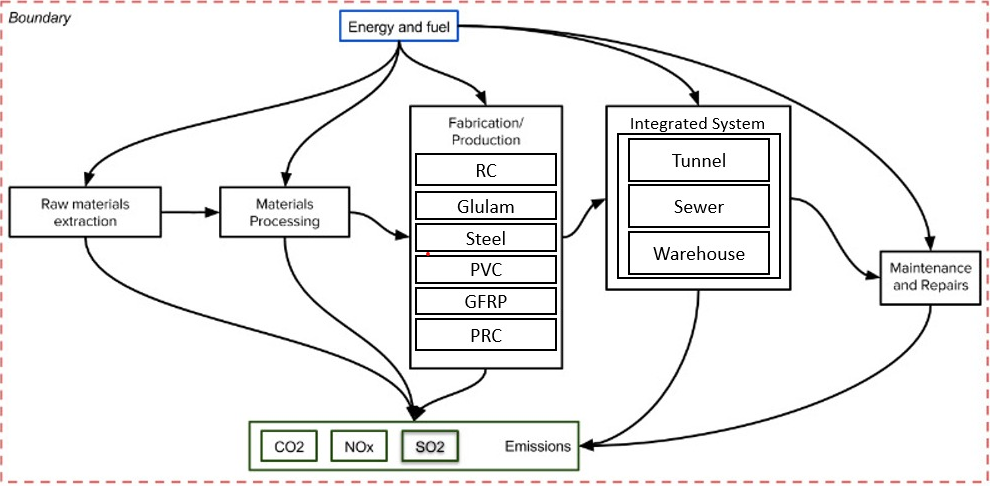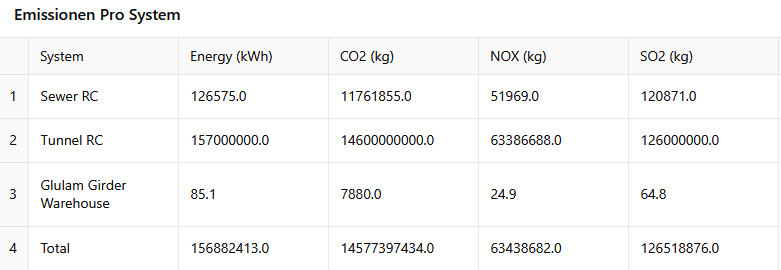For our integrated LCA in the second assignment, we defined different scopes and boundaries for every of our systems. To ensure a consistent concept and maintain the same boundaries and scope across all systems, we decided to use the LCI materials provided by the deparment.
The road tunnel in our analysis has a length of 500 meters, while the sewer canal extends over 1,000 meters. Both systems require substantial amounts of concrete, steel reinforcement, and other construction materials, leading to significant environmental impacts, particularly in terms of embodied carbon emissions, energy consumption and resource consumption. The large-scale nature of these infrastructures means that their initial material production, transportation, and installation have a dominant influence on the overall LCA results.
In contrast, the warehouse features 10-meter-long girders, which have a much smaller material footprint compared to the tunnel and sewer canal. However, their role in the overall life cycle is still crucial, especially when considering maintenance and repair activities. Since warehouses typically require periodic structural reinforcements and refurbishments, the recurring material use for maintenance contributes significantly to the long-term environmental impact.
Although the tunnel and sewer canal dominate in terms of total material input and environmental burden, the warehouse girders are particularly relevant in the maintenance phase, influencing the system’s overall sustainability. This highlights the importance of considering both large-scale initial impacts and long-term maintenance requirements in a holistic LCA approach.
The results show the emissions and energy consumption for each system in the integrated LCA. The sewer RC system has an energy demand of 126,575 kWh, producing 11,761,855 kg of CO₂, 51,969 kg of NOₓ, and 120,871 kg of SO₂. The tunnel RC system has significantly higher values, with an energy consumption of 157,000,000 kWh, CO₂ emissions of 146,000,000 kg, 63,386,688 kg of NOₓ, and 12,600,000 kg of SO₂. In contrast, the glulam girder warehouse has a minimal impact, consuming only 85.1 kWh, with emissions of 7,880 kg CO₂, 24.9 kg NOₓ, and 64.8 kg SO₂. The total emissions and energy use across all systems reflect the dominant influence of large infrastructure projects such as the tunnel and sewer canal, while the warehouse girder, despite its low impact, remains relevant in the overall assessment.

